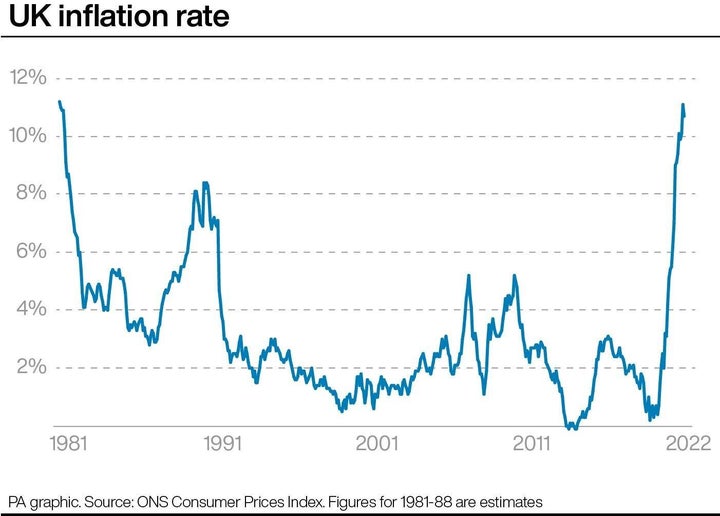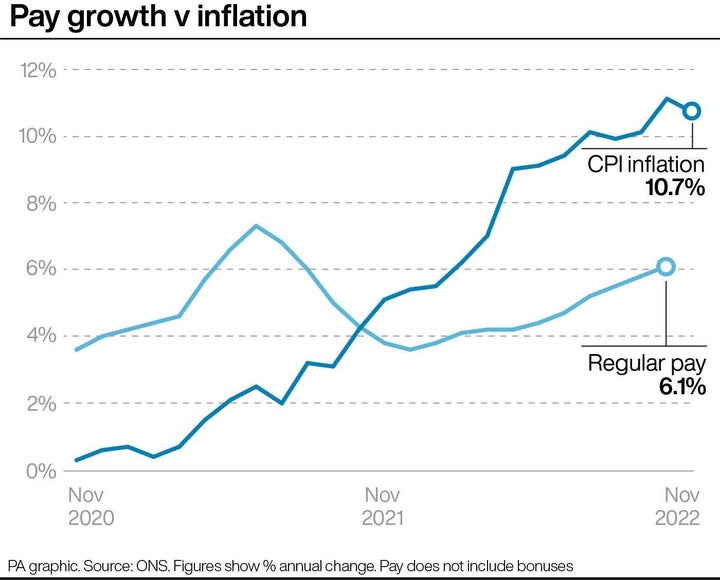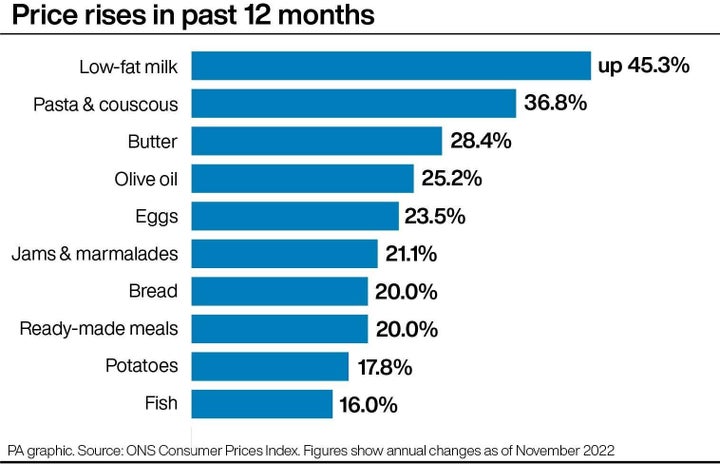
Inflation has well and truly come to town this Christmas, and its impact has never been clearer than in these five (bleak) graphs.
By looking at past UK prices, projections for the future and the effect it’s having on our finances right now, we can get a better picture of our economy’s health – and how much this Christmas is likely to cost.
Inflation is the overall change to prices when compared to last year. For example, if a £1 coffee has been hit by 10% inflation, it becomes £1.10.
To mimic Charles Dickens’ A Christmas Carol, let’s start off by looking at our modern-day Scrooge’s past...
Past
The Bank of England always aim for target to be a 2%, to help businesses set the right prices and for people to plan their spending.
If inflation is too low people may not spend because they expect prices to fall soon. Companies might then shrink and people could lose their jobs, as the BoE explains on its website.
If we look back at past inflation rates, we can see the 10.7% figure (based on November’s stats) hasn’t been around since 1982 – and October’s even higher rate of 11.1% was a 41-year-high.
These historic, higher rates seen in the early 80s were triggered by rising oil prices and rising wages. It was brought down by strict public spending curbs, and raising interest rates, triggering a recession and an increase in unemployment.
Inflation then started to climb up gradually again until the 2009 financial crash, where prices were slashed to reduce the fallout.
They have stayed at an unprecedented low, dropping to under 1% during the pandemic – but coming back with a vengeance when the Ukraine war began and the global economy reopened after Covid lockdowns.

Present
To make matters worse, pay is clearly lagging far behind inflation rates (now more than ever) judging from the pay growth versus inflation rates.
This means your pay packet won’t be going as far this Christmas.
The ONS released stats on Tuesday that revealed regular pay fell in real terms by 2.7% between August and September, one of the biggest declines in value since records on salaries began in 2001.

Current prices are pretty bleak compared to last year’s, too.
Data from the Office for National Statistics shows how key ingredients for Christmas dinners – such as butter, olive oil and milk – have all gone up by more than 10%.

There’s a small element of festive cheer though when you look at annual price rises overall.
While products such as petrol, food, clothing and tobacco (along with eating out in restaurants) were among the most inflated items, driving up the overall rate in October, this dropped slightly this November from 11.1% to 10.7%.
And while this is good news, it doesn’t mean prices will decline – just that costs are not rising at quite the same speed as they were last month.

Future
And then there’s the forecast for inflation.
The Bank of England predicts that inflation rates will fall sharply in mid-2023, to around 5.2% by the fourth quarter.
The economists believe the price of energy won’t continue to rise so quickly, and neither will the price of imported goods, and there’s expected to be less demand for goods and services in the UK too.
However, it's then predicted to fal below the target of 2%, dropping to 1.4% in 2024 and to 0% in 2025, which could spell further problems for our economy as a whole later down the line....
